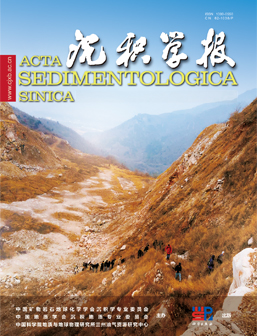Maosan section-Wu section reservoirs in north-central Sichuan region
doi: 10.14027/j.issn.1000-0550.2024.073
- Received Date: 2023-11-06
- Available Online: 2024-07-02
-
Key words:
- Key words: Dolomite genesis /
- Permian /
- Maosan section /
- Wu section /
- north-central Sichuan region
Abstract: [Objective] Powdery~fine-crystalline dolomite dominated by residual granular structure and non-luminous under cathode rays is developed in the reservoir section of Maosan section-Wu section of the Permian of the Yuanba Tectonics in north-central Sichuan Province, and the mechanism of the genesis of this type of dolomite in the study area is not clear at the present time. [Methods] The dolomite genesis mechanism was studied based on the petrological characteristics of the reservoir combined with TIMA scanning of rocks, whole-rock X-ray diffraction (XRD) analysis, in-situ microzonation of major trace elements, strontium isotopes, and in-situ U-Pb chronology of dolomite. [Results] The study shows that: (1) the rock types of the reservoirs in Maosan Section 3 and Wu Section 1 are tuffs, dolomites and sedimentary tuffs. Tuff reservoirs mainly include mud crystal clastic tuff, bright crystal clastic tuff and cloudy tuff; dolomite reservoirs are semi-autogenous~autogenous powder~fine crystalline dolomite; sedimentary tuff reservoirs are mainly composed of volcanic clasts, charcoal, calcium and magnesium, sand clasts and metal minerals, etc. Volcanic clasts are glass clasts, basaltic and other clasts, and the main constituents of calcium and magnesium are dolomite and calcite. (2) The average values of trace elements of dolomite at the top of Maosan Section 3 and Wu Section 1 show extremely high Fe content (10,678.40×10-6), high Mn content (822.95×10-6), Si content (1,929.81×10-6), Al content (394.11×10-6), and high Na+K content (362.38×10-6), indicating that the fluids in the closed environment were formed by the volcanic fluids, which is the main component of calcium and magnesium, and calcite. Indicating that the rock-forming fluids in the confined environment are characterized by high salinity and high alkaline metal content. The 87Sr/86Sr in the matrix part of the dolomite and mud-crystal clastic tuff is within the range of seawater of the same period in the Maokou Group-Wujiaping Group, and it also has a low value of ∑REE, a loss of LREE, and exhibits the characteristics of negative anomalies of Ce (the average value of δPr is 1.03>1, and the average value of δCe is 0.96<1), and negative anomalies of Eu or no anomalies, which suggests that the dolomitization diagenesis fluid is similar to the seawater of the same period. seawater. (3) The U-Pb age of powdery to fine-crystalline dolomite in the Maosan section and Wu section is 245.36±1.08 Ma, and dolomitization mainly occurred in the shallow burial period.[Conclusion] It is concluded that the source of the dolomitization fluid in the powdery~fine crystalline dolomite of Maosan section and Wu section is the compaction and dewatering of clay minerals in the overlying muddy sedimentary tuff and tuffaceous mudstone sections of Wu section 1 and Wu section 2 during the shallow burial period. During this process, a large number of Mg2+, Fe2+, Al3+, and Si4+ ions were precipitated and transported to the granular tuff at the top of the Wu 1 and Maosan 3 Sections and accounted for by the seawater residual from the Maokou Formation to the Wujiaping Stage as the carrier.
| Citation: | Maosan section-Wu section reservoirs in north-central Sichuan region[J]. Acta Sedimentologica Sinica. doi: 10.14027/j.issn.1000-0550.2024.073 |






 DownLoad:
DownLoad: